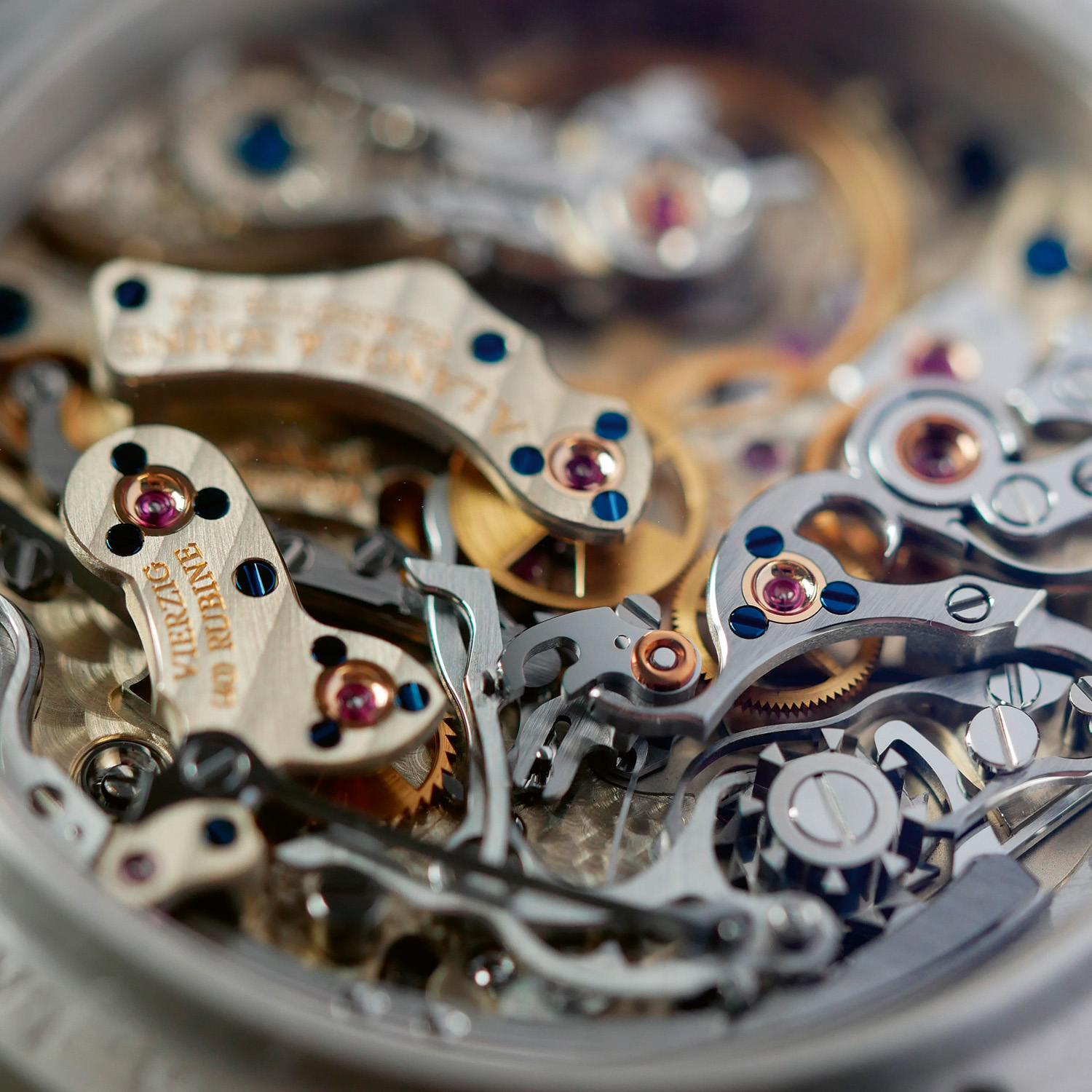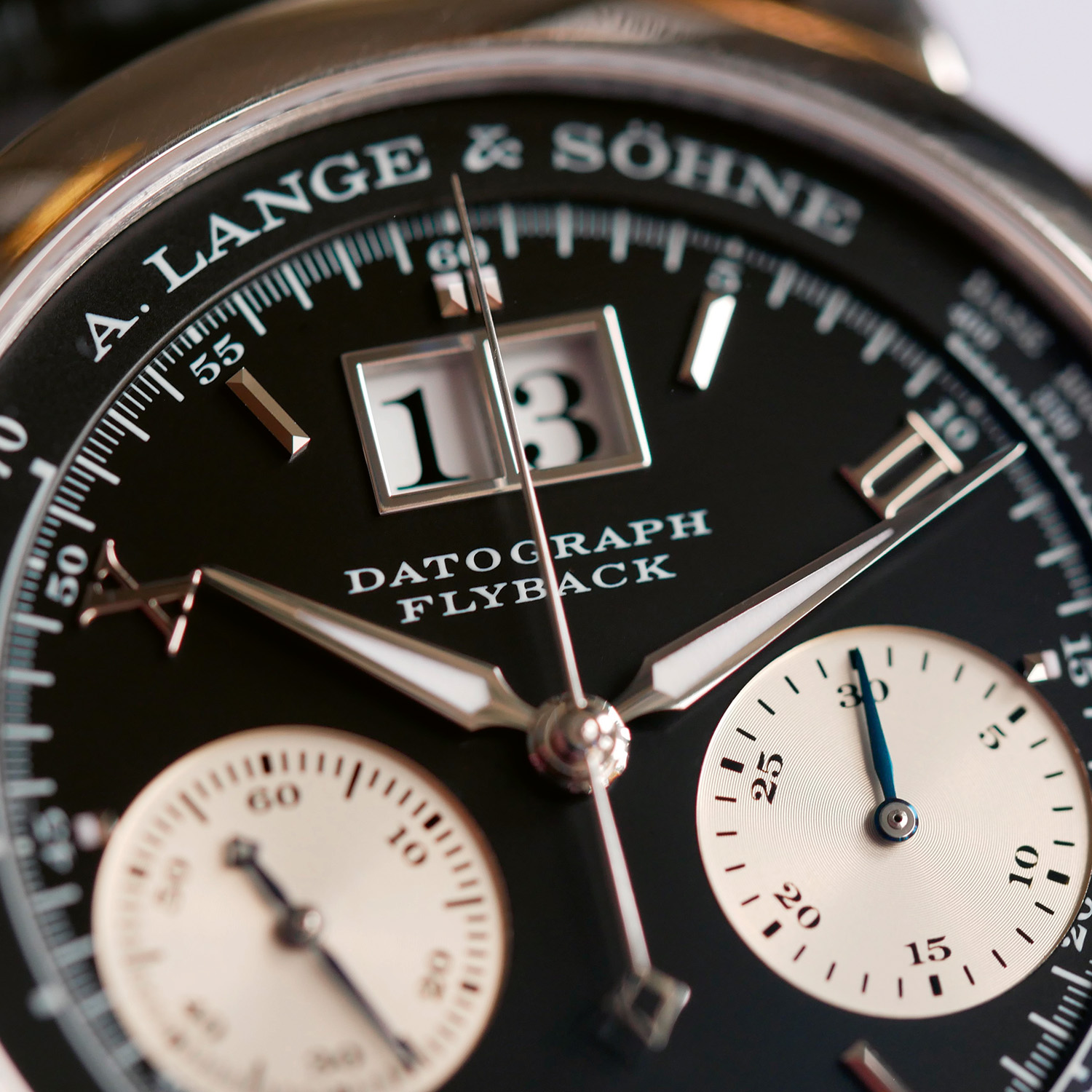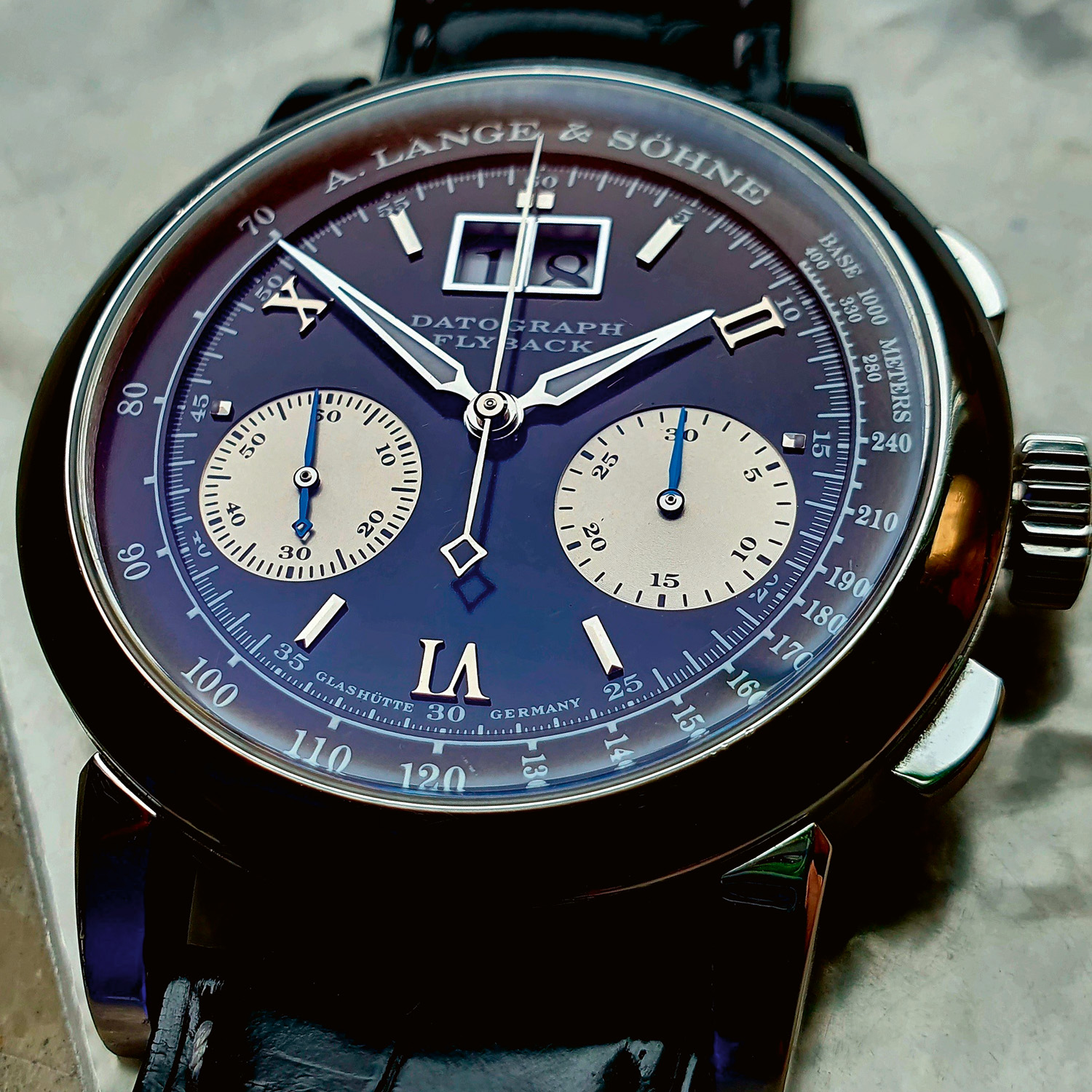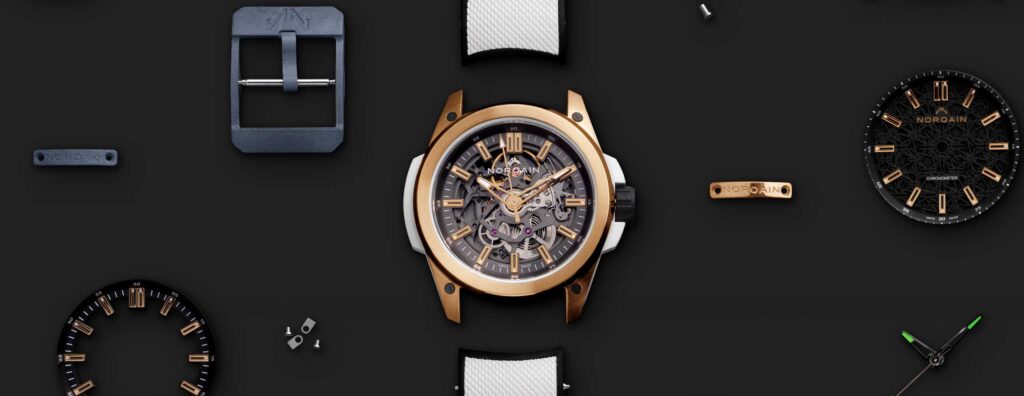News
The Datograph: Vision of an Icon
News
The Datograph: Vision of an Icon
The platinum Datograph, which was initially released in 1999 and continued production until 2012, represents the Holy Grail for many in the world of luxury timepieces. First-generation Lange Datographs are available in five different references, each showcasing a distinctive aesthetic. The 403.035 model features a platinum case and a black dial, exuding a sleek and sophisticated aura. Meanwhile, the 403.032 model boasts a pink gold case and a silver dial, radiating elegance and refinement. For those who prefer a touch of contrast, the 403.031 model offers a pink gold case paired with a black dial.

Ref 403.035. The quintessential Datograph aesthetic in platinum

Datograph Flyback Ref.403.032,403.031 (image: mrwatchley)
The Heart of the Datograph: Cliber L951.1
The Datograph is powered by the caliber L951.1, a manual wind column wheel chronograph movement with a horizontal clutch. This movement is a marvel of engineering, both technically and aesthetically, resembling a miniature mechanical Grand Canyon with its multilevel layers. It beats at 2.5Hz and provides a power reserve of 36 hours, with 405 movement parts neatly accommodated within. The L951.1 is also a flyback chronograph and features a jumping minute counter, adding to its technical prowess. Renowned watchmaker Philippe Dufour has lauded this movement as “the best chronograph movement ever made,” a testament to its brilliance.

Caliber L951.1
Well into the 24th year since its birth, the Datograph, in particular, is a testament to the extraordinary craftsmanship and wonderful micro-mechanical artistry that goes into its creation. It not only exemplifies exceptional finishing, but also establishes a new benchmark for the industry. All of the finishing techniques employed in this movement are truly exceptional, showcasing a myriad of details such as linear finishes, chamfering, grinding, flat polishing, circular graining and perlage. The result is a visual feast that showcases the exquisite use of German silver and steel materials. Overall, the attention to detail and dedication to achieving impeccable finishing in Lange’s timepieces set them apart as true works of art in the world of watchmaking, while also espousing the immaculate Saxon watchmaking traditions as determined by Ferdinand Adolph Lange.

A stunning landscape filled with levers of complex shapes: the heart lever, flyback lever (in the shape of a claw) and the coupling lever
The many faces of the Datograph
Beyond all doubt, the most popular and widely admired version is the ref. 403.035, with its platinum case, and black dial with silver subdials. This version is the quintessential Datograph, encapsulating all the qualities that have made this watch a horological icon. It has been in production the longest and is the most widely seen model. The ref. 403.031 is a rare pink gold variant with a black dial and silver subdials. Its nickname, the “Dufourgraph,” comes from the fact that it is a watch that Philippe Dufour has often been spotted wearing.


The Design of the Datograph
The Datograph possesses a highly intricate dial design, exuding a sense of restrained opulence amid traditional aesthetics. Its weight and size are notably substantial, which cuts an imposing figure on the wrist. Furthermore, its prominent appearance demands attention and often becomes the focal point of discussions in any given setting. This overt presence and conspicuousness naturally means that, like it or not, Datograph wearers will often be at the center of attention. Consequently, it is not uncommon to encounter a few Datographs in circulation, as they are often kept in pristine condition, akin to cherished vintage cars showcased exclusively at esteemed events like the Concours D’Elegance at Pebble Beach.

An intricate yet balanced dial design meets a beautiful labyrinthine movement
The dial design of the chronograph displays a conservative aesthetic. It features a black dial with white subdials and only three Roman numerals (II, VI, X). Uncommonly, the subdials are positioned below the horizontal line that stretches from three to nine o’clock on the watch dial. This placement was necessary due to the presence of the outsize date (Großdatum) at the 12 o’clock position, leaving precious little space for the chronograph mechanism. The Datograph embodies several signature design elements found in A. Lange & Söhne watches, including the characteristic hands, three-part case shape, Lange lugs, outsize date, and pushers. The watch maintains a pleasant size, with a case diameter of 39mm, when viewed from a contemporary perspective.

A symbol of German watchmaking prowess, the Datograph is a modern classic unlike any other
However, the later version boasts a larger size, offering with it the advantage of an extended power reserve. The chronograph function of the watch records up to 30 minutes and 59 seconds. Some may argue that this duration is insufficient, while others may contend that it is adequate, so it really comes down to individual preference. It is important to note that a chronograph primarily serves as a tool for sports timing, and there are few day-to-day sporting activities that exceed this time frame. Therefore, the inclusion of hour counting may not be necessary in this context.
A Modern Classic
As we prepare to celebrate the 25th anniversary of the Datograph, it’s clear that this watch has carved a unique niche in the world of horology. It stands as a symbol of German watchmaking prowess, a testament to A. Lange & Söhne’s commitment to innovation and craftsmanship, and a modern classic in its own right.











